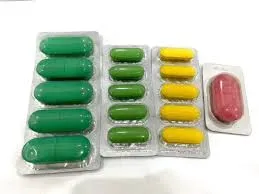- Afrikaans
- Albanian
- Amharic
- Arabic
- Armenian
- Azerbaijani
- Basque
- Belarusian
- Bengali
- Bosnian
- Bulgarian
- Catalan
- Cebuano
- Corsican
- Croatian
- Czech
- Danish
- Dutch
- English
- Esperanto
- Estonian
- Finnish
- French
- Frisian
- Galician
- Georgian
- German
- Greek
- Gujarati
- Haitian Creole
- hausa
- hawaiian
- Hebrew
- Hindi
- Miao
- Hungarian
- Icelandic
- igbo
- Indonesian
- irish
- Italian
- Japanese
- Javanese
- Kannada
- kazakh
- Khmer
- Rwandese
- Korean
- Kurdish
- Kyrgyz
- Lao
- Latin
- Latvian
- Lithuanian
- Luxembourgish
- Macedonian
- Malgashi
- Malay
- Malayalam
- Maltese
- Maori
- Marathi
- Mongolian
- Myanmar
- Nepali
- Norwegian
- Norwegian
- Occitan
- Pashto
- Persian
- Polish
- Portuguese
- Punjabi
- Romanian
- Russian
- Samoan
- Scottish Gaelic
- Serbian
- Sesotho
- Shona
- Sindhi
- Sinhala
- Slovak
- Slovenian
- Somali
- Spanish
- Sundanese
- Swahili
- Swedish
- Tagalog
- Tajik
- Tamil
- Tatar
- Telugu
- Thai
- Turkish
- Turkmen
- Ukrainian
- Urdu
- Uighur
- Uzbek
- Vietnamese
- Welsh
- Bantu
- Yiddish
- Yoruba
- Zulu
Nov . 11, 2024 21:08 Back to list
oxytetracycline cattle dose
Understanding Oxytetracycline Dosage for Cattle
Oxytetracycline is a broad-spectrum antibiotic that is widely used in veterinary medicine, particularly for cattle. This antibiotic is effective against a variety of gram-positive and gram-negative bacteria, making it an essential tool for treating infections in livestock. However, understanding the appropriate dosage and administration methods is crucial for ensuring the health of cattle while minimizing the risk of antibiotic resistance.
Mechanism of Action
Oxytetracycline works by inhibiting protein synthesis in bacteria, thereby preventing their growth and reproduction. It is effective against several types of bacterial infections, including respiratory diseases, shipping fever, and various infections of the gastrointestinal tract. The antibiotic is also known for its anti-inflammatory properties, which can further aid in the recovery of sick animals.
Dosage Guidelines
The dosage of oxytetracycline for cattle can vary depending on multiple factors, including the specific type of infection being treated, the weight of the animal, and the formulation of the drug. Typically, the dosage ranges from 10 to 20 mg per kilogram of body weight, administered either intravenously, intramuscularly, or subcutaneously. For example, if a cow weighs 600 kg, a daily dose might range from 6,000 mg to 12,000 mg of oxytetracycline.
For most bacterial infections, a common treatment protocol involves administering the antibiotic for several days, often ranging from 3 to 10 days, depending on the severity of the infection and the response of the animal to the treatment. It’s important to note that the full course of antibiotics should be completed, even if the animal appears to improve before the treatment period ends. Failure to do so can contribute to the development of antibiotic-resistant bacteria.
Administration Techniques
oxytetracycline cattle dose

Oxytetracycline can be given in various forms injectable solutions, boluses, or even as a feed additive. The choice of administration method depends on the healthcare needs of the cattle and the specific circumstances of the treatment. Injectable formulations provide rapid absorption and quicker therapeutic effects, making them suitable for acute infections. When administered intramuscularly, care should be taken to rotate injection sites to avoid tissue damage.
Alternatively, oxytetracycline can be mixed into cattle feed, allowing for easier administration, especially in herds where individual injections would be impractical
. However, the consistency of medication delivery can vary with this method, potentially affecting treatment outcomes.Safety and Precautions
While oxytetracycline is generally safe when used as directed, potential side effects include gastrointestinal disturbances, allergic reactions, and interference with normal growth in young animals. Therefore, it’s critical to monitor cattle for any adverse effects during treatment.
Moreover, veterinarians must consider withdrawal times before animals are sent to market. Withdrawal time is the period after the last dose of antibiotic during which the animal should not be slaughtered for food. For oxytetracycline, this is typically set at several days after the final dose, ensuring that residues have cleared from the animal's system.
Conclusion
In conclusion, oxytetracycline is an invaluable medication in the treatment of bacterial infections in cattle. Understanding the appropriate dosage and administration, while being mindful of safety precautions, is vital for effective treatment. As the agricultural industry continues to face challenges related to antibiotic resistance, responsible use of oxytetracycline, as well as ongoing education for livestock producers, will play a crucial role in maintaining the health of cattle and the integrity of the food supply. Veterinarians and cattle producers should work closely together to ensure the best possible outcomes for animal health and welfare.
-
Guide to Oxytetracycline Injection
NewsMar.27,2025
-
Guide to Colistin Sulphate
NewsMar.27,2025
-
Gentamicin Sulfate: Uses, Price, And Key Information
NewsMar.27,2025
-
Enrofloxacin Injection: Uses, Price, And Supplier Information
NewsMar.27,2025
-
Dexamethasone Sodium Phosphate Injection: Uses, Price, And Key Information
NewsMar.27,2025
-
Albendazole Tablet: Uses, Dosage, Cost, And Key Information
NewsMar.27,2025













